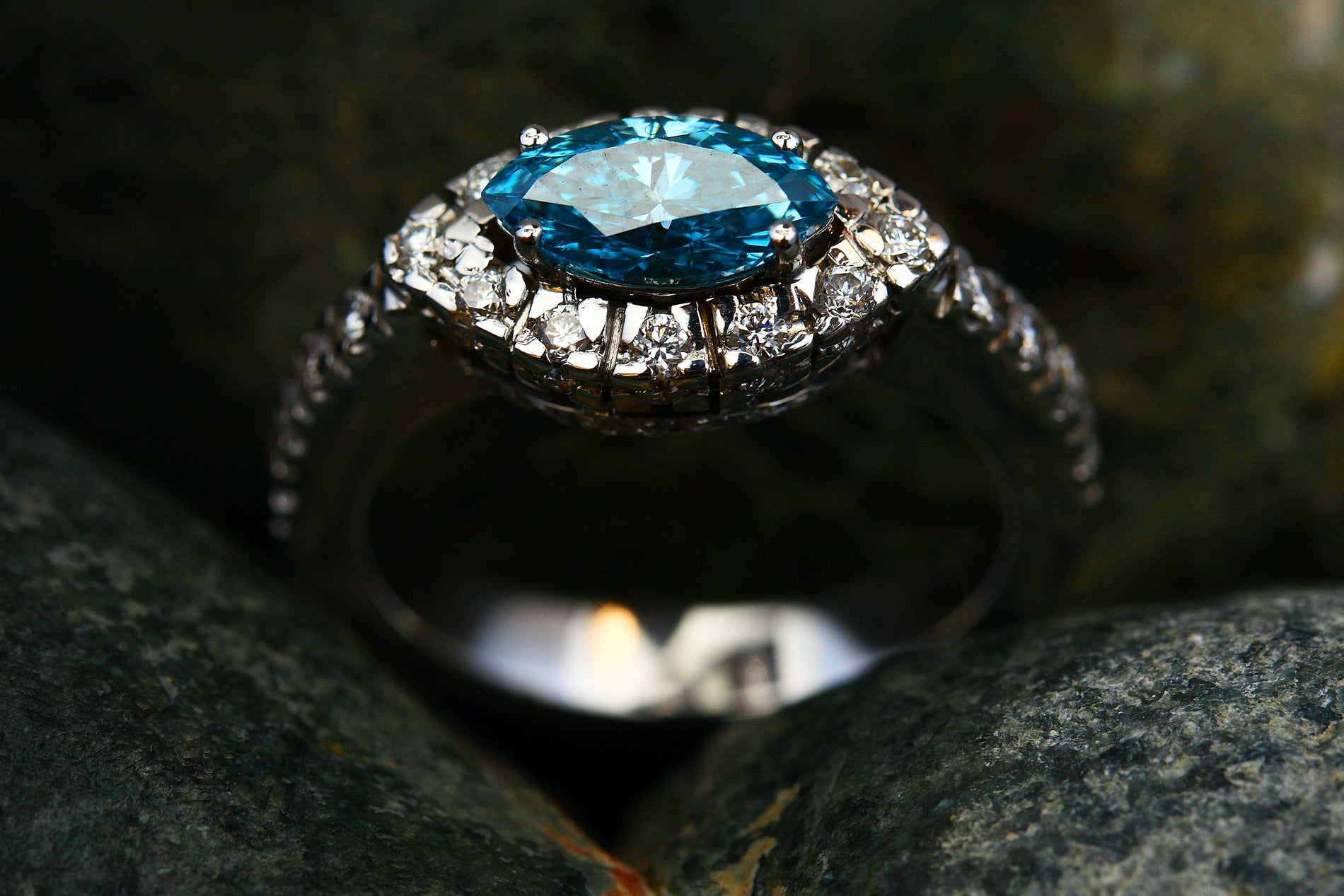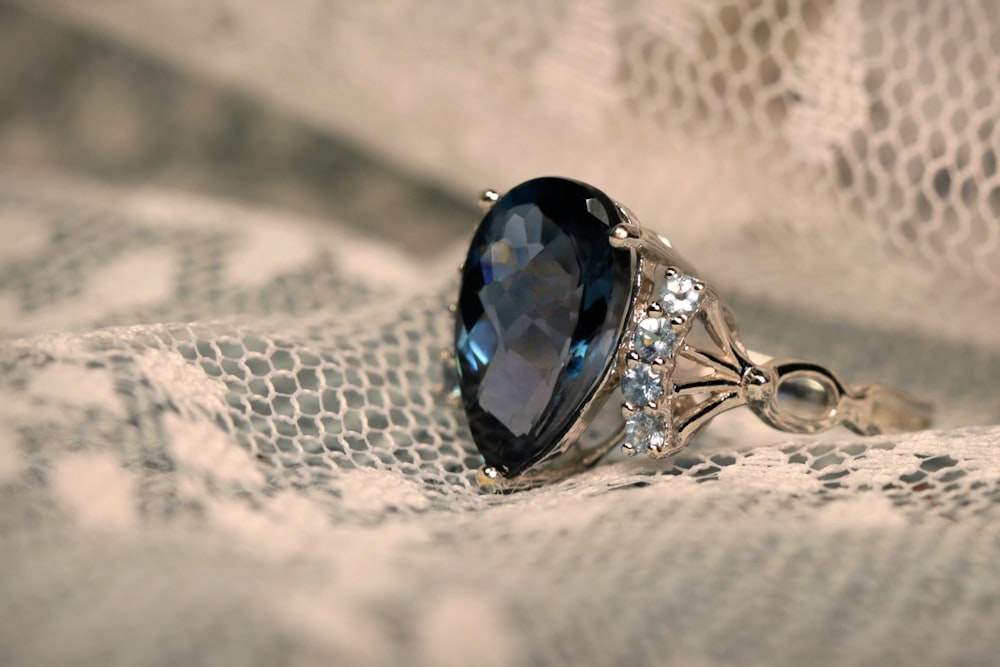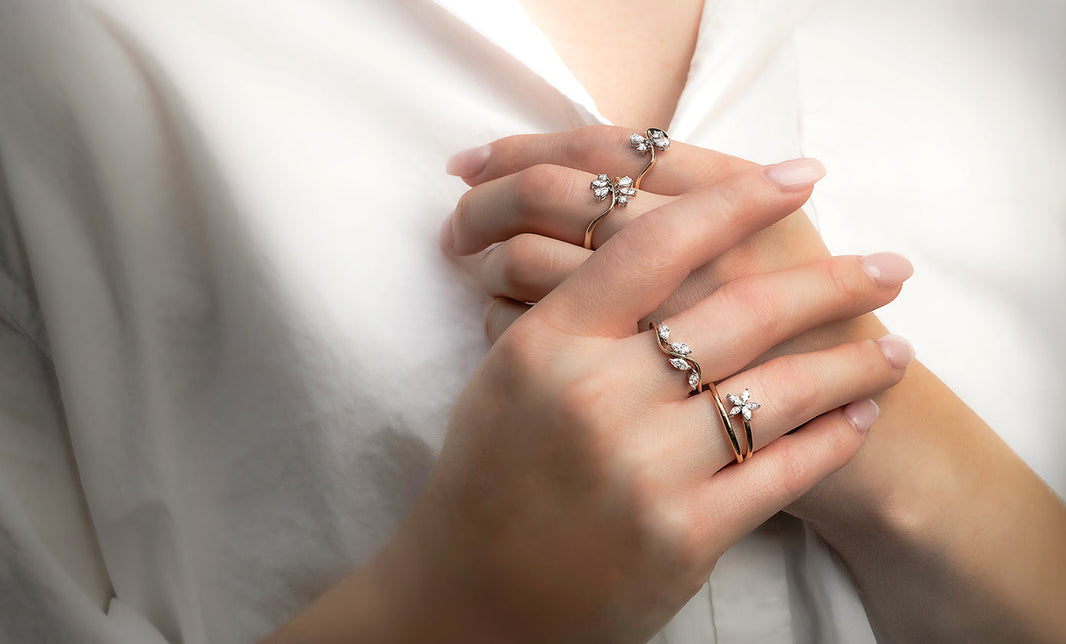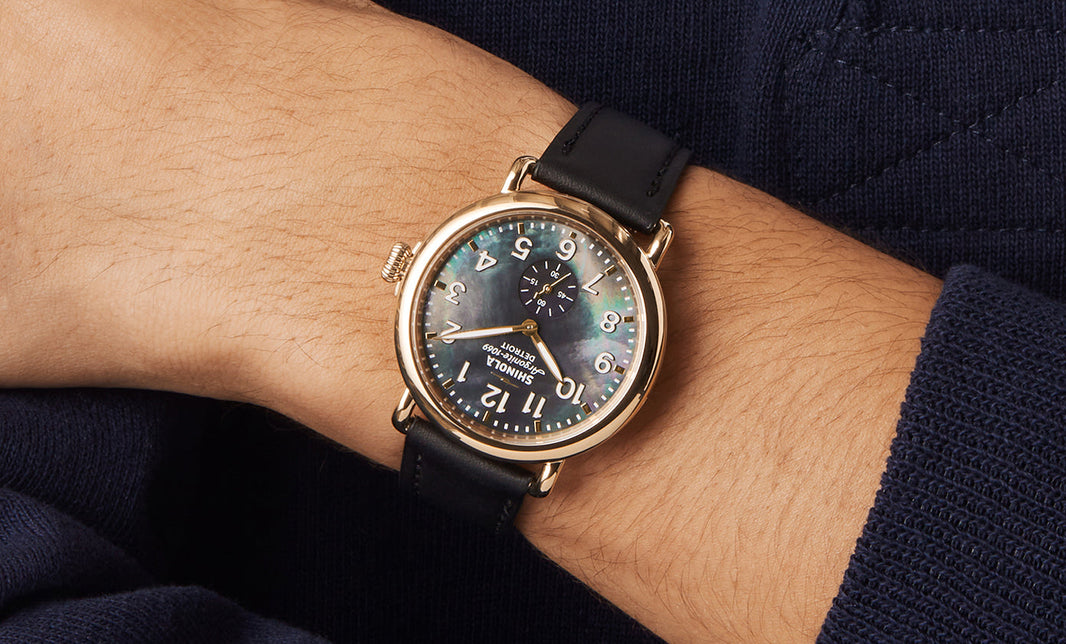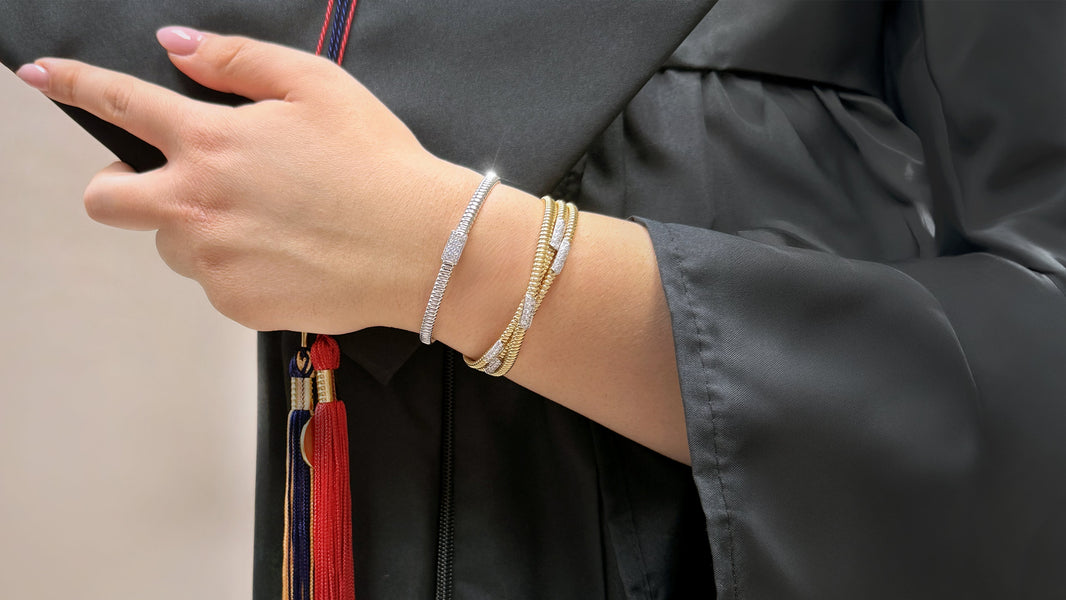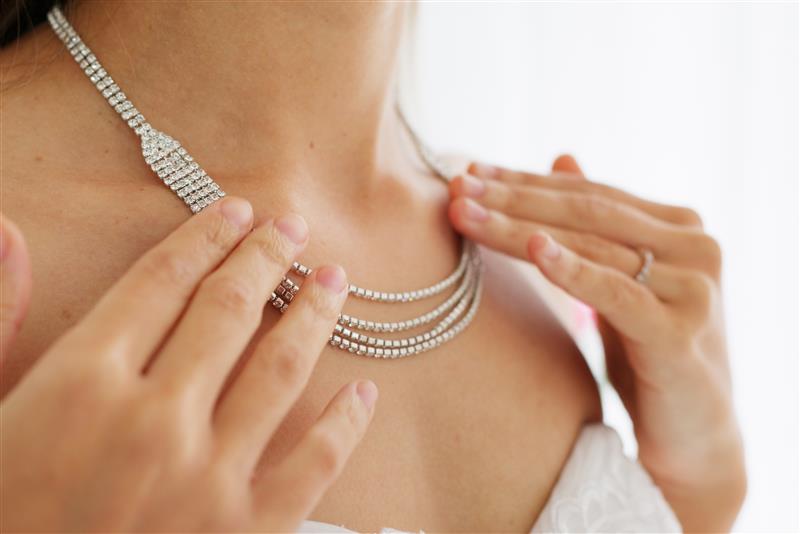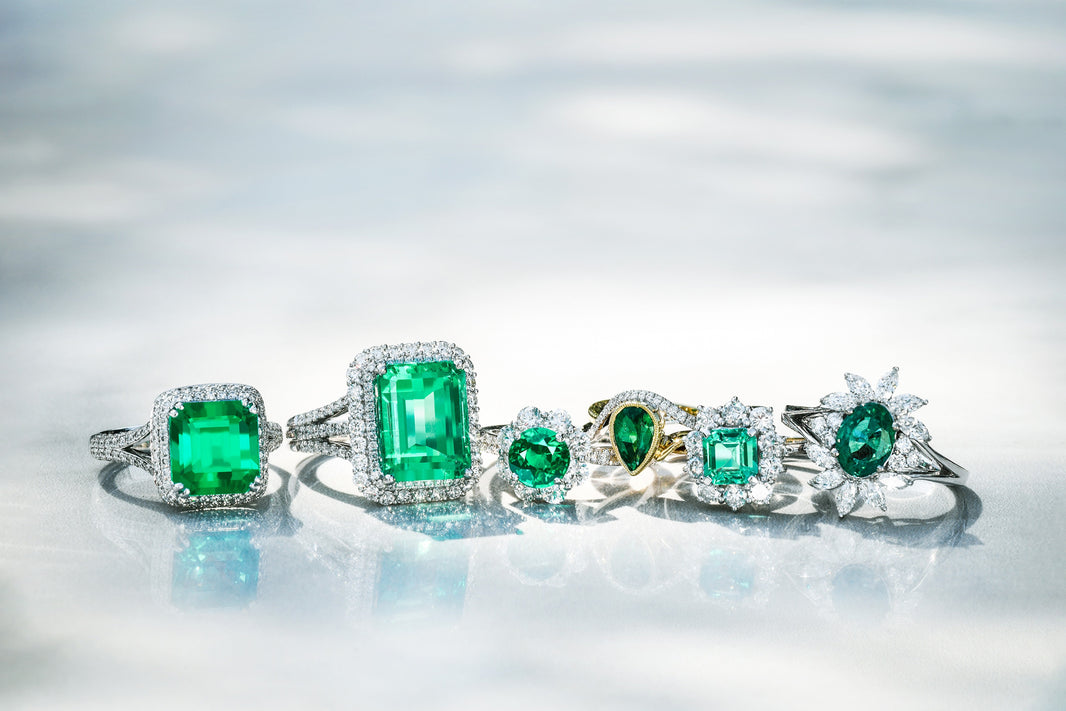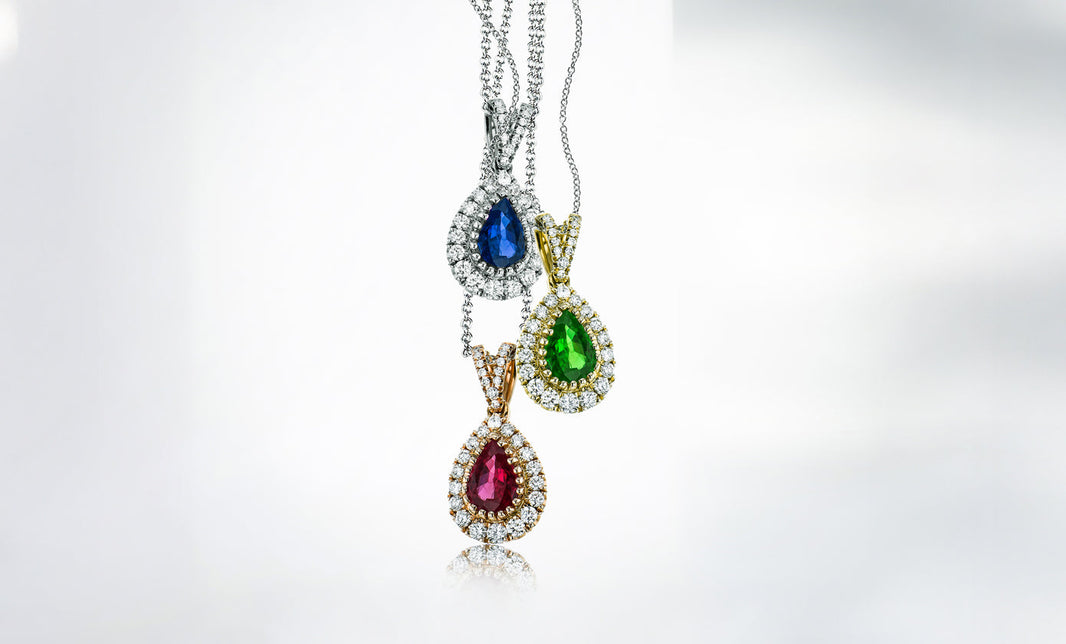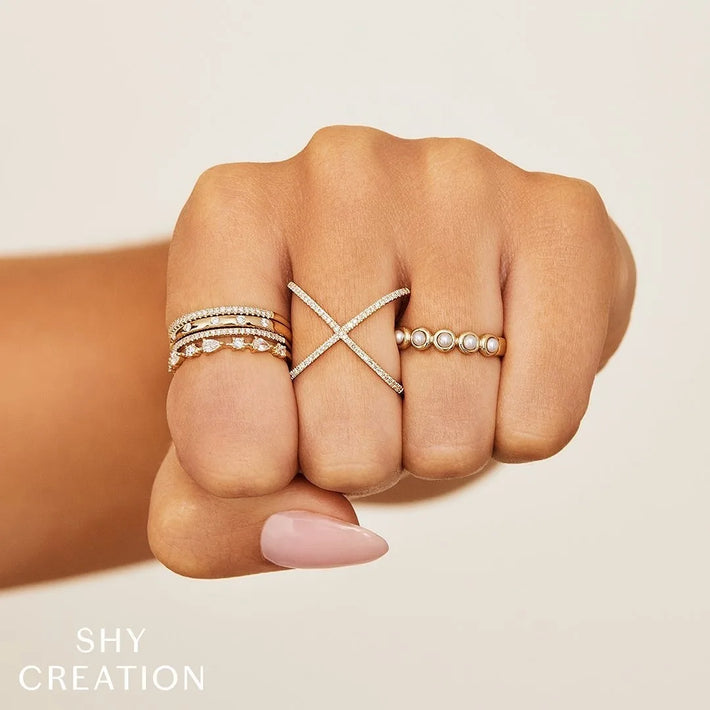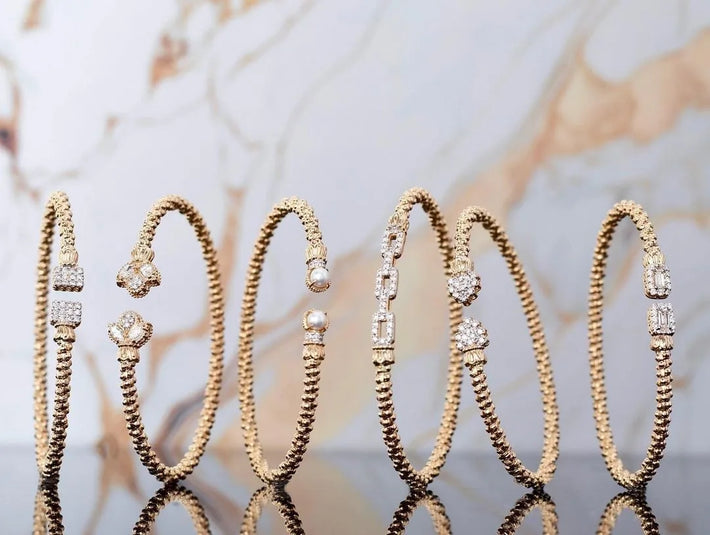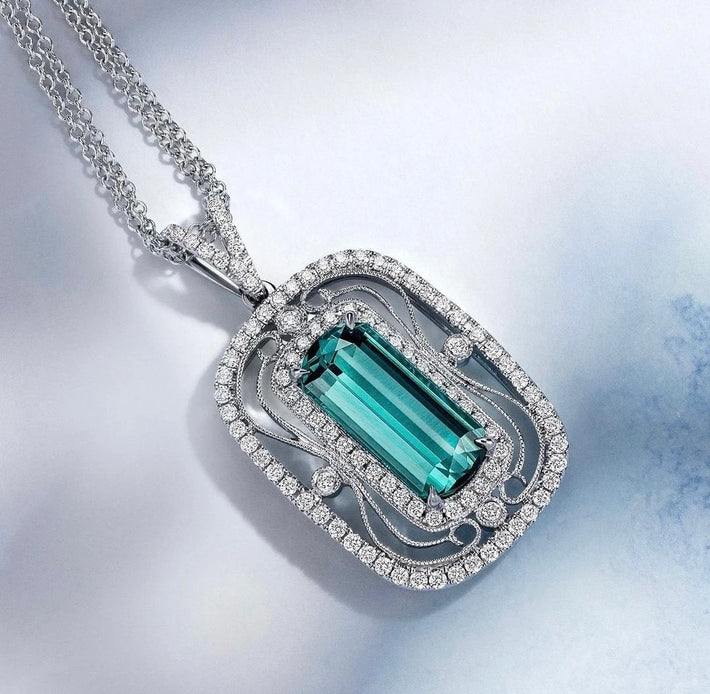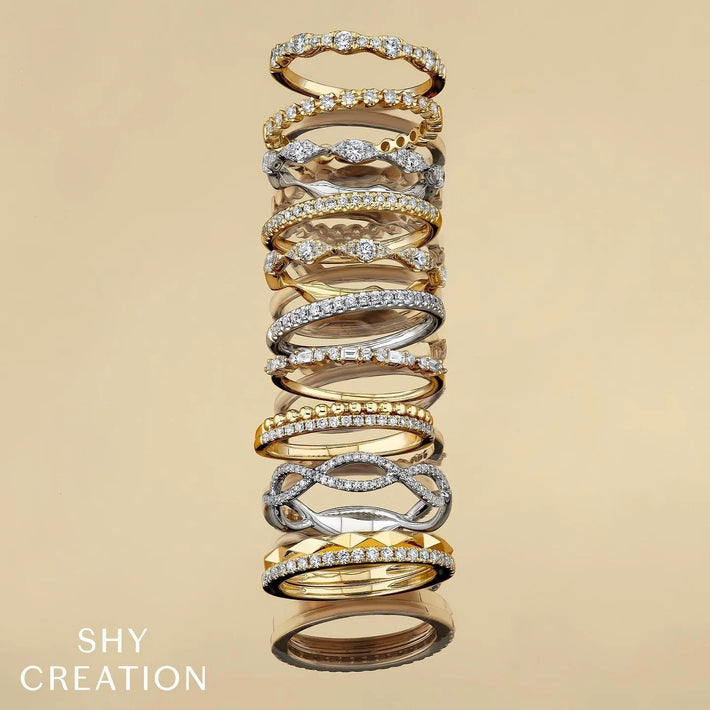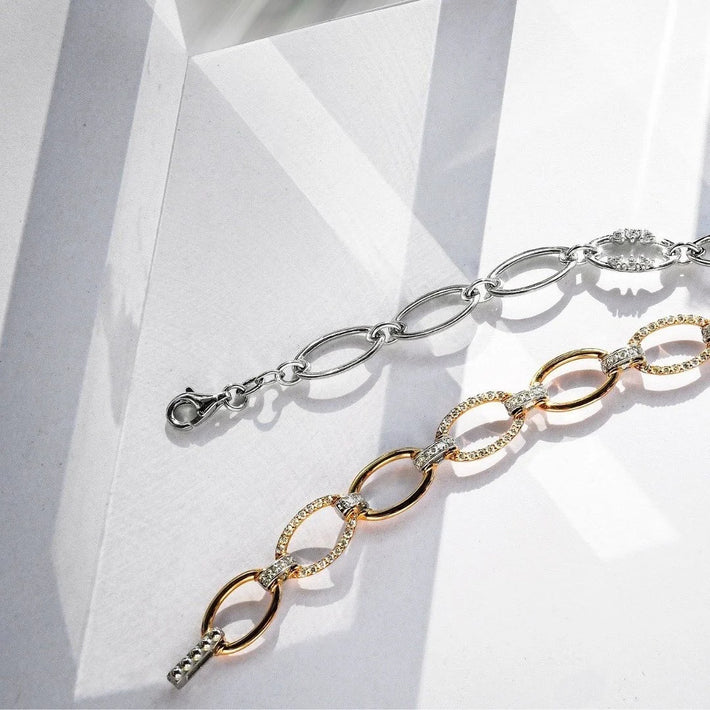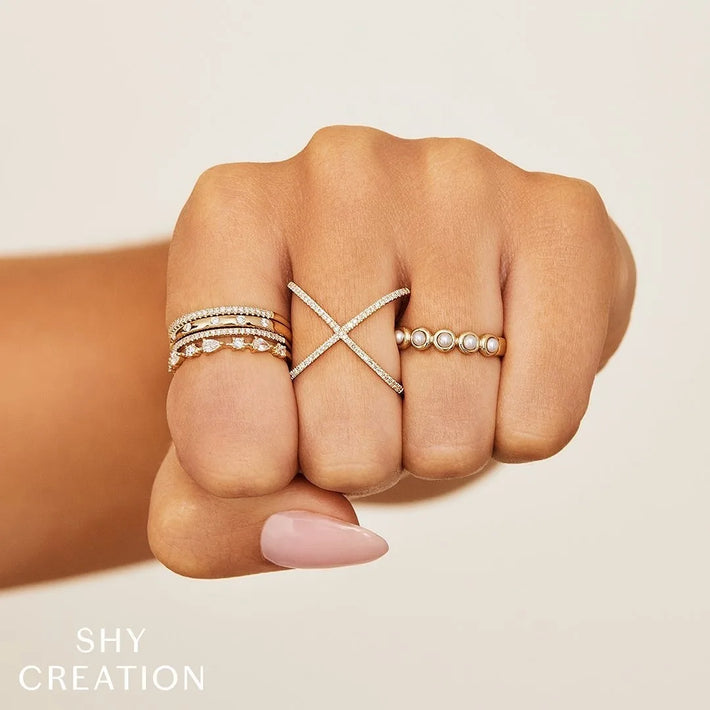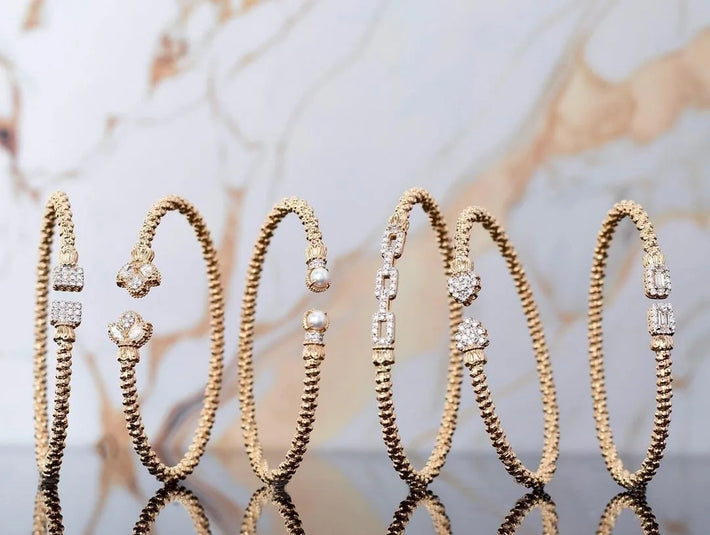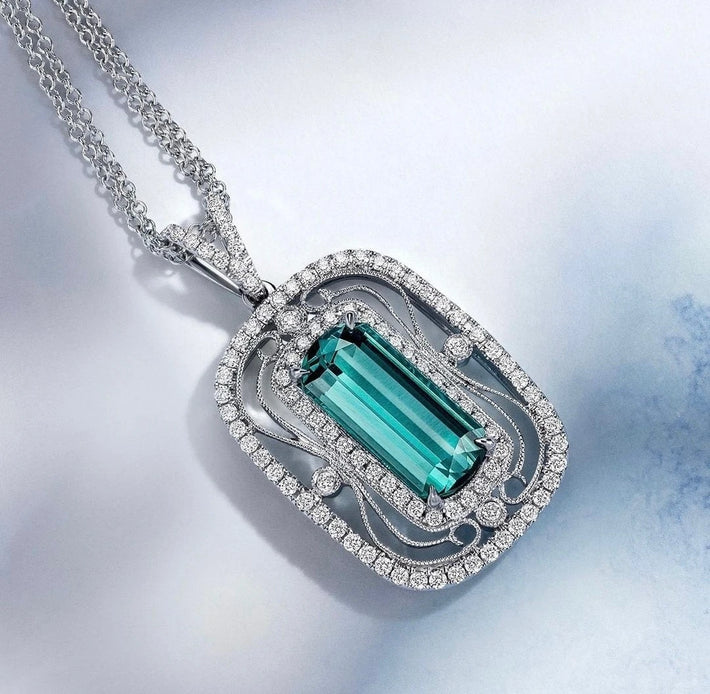There may be dozens of different colored stones used in jewelry but there are only four that are classed as gemstones. These are diamond, emerald, ruby and sapphire. All other are semi-precious stones.
Sapphire is the second most popular gemstone after diamonds and is widely used along with diamonds in engagement rings. Much of the enduring prominence and captivating allure of diamond and sapphire engagement rings is thanks to the ring King Charles III (then Prince of Wales) presented to Diana Spencer, Princess of Wales. Not only did it popularize the combination of diamonds and sapphires but it also increased the cultural significance and desire for halo engagement rings. Kate Middleton, Duchess of Cambridge wears the ring today.
But fancy sapphires aren't just popular in engagement rings. Every fine jewelry store sells sapphire pendants, sapphire earrings, sapphire cocktail rings and sapphire bracelets in a wide range of styles for occasional and everyday wear.
Sapphires are beautiful blue gemstones but they aren't restricted to blue. Sapphires come in a range of captivating colors. The allure of sapphires makes it a gemstone with a rich history.
What is a Sapphire?
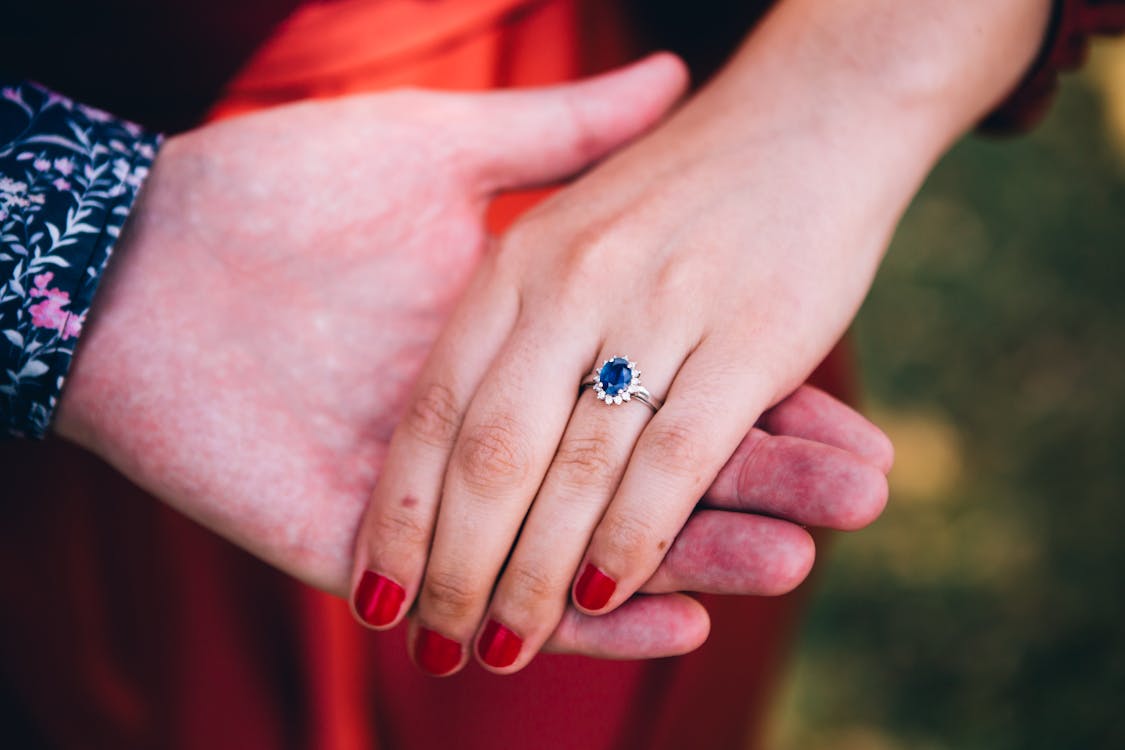
Here comes the science bit!
The name sapphire comes from the Latin word sapphirus which is derived from the Greek word sappheiros which is the name given to the semi-precious stone, lapis lazuli.
Sapphires have exceptional hardness, standing at 9 on the Mohs Scale, behind diamond at 10 and moissanite at 9.5. As well as being used in jewelry, its hardness lends it to industrial applications and it is used in integrated circuits, infrared electrical components, wristwatch movements and blue LEDs.
Sapphire is in the corundum mineral family. It consists of aluminum oxide with numerous trace elements including boron, cobalt, chromium, iron, lead, magnesium, silicon, titanium and vanadium. Like diamonds, technology has enabled the manufacture of synthetic sapphires in laboratory conditions.
The Colors of Sapphires
The pure form of the mineral corundum is colorless and it is the presence of trace elements in various quantities that produces a range of stunning colors. The quantity of titanium essentially controls the depth of a stone's color - the darker the color, the higher the level of titanium.
Most typically, sapphire colors range from pale to deep blue but fancy, colored sapphires can be green, yellow, orange and purple. When the mineral corundum appears in red or pink, they are not called sapphires but are rubies. If corundum stones occur in two or more colors, they are known as "parti sapphires".
Blue Sapphires
There are many shades of blue that are the result of minute differences in geological processes when the stone is formed. Despite the range of blue, gem enthusiasts have their favorites. These include:
Cornflower blue sapphire: One of the most valuable types of sapphires, vivid cornflower is the brightest and truest medium blue.
Ice Blue sapphire: They lack vibrant blue color which makes them less valuable than brighter blue stones but their pale, frosty blue is desirable to those who want a hint of rather than a pop of color.
Ceylon sapphire: Some of the finest sapphires are produced in Sri Lanka, formerly known as Ceylon. Ceylon sapphires display a whole range of blue shades.
Teal sapphire: As the name indicates, these are sapphires that show pleochroism (color change) and can be green-blue or blue-green depending on their iron content.
Other Colors
Pink Sapphire
Pink sapphires were extremely rare until large deposits were discovered in Madagascar. The pink color is created by chromium within the corundum crystal structure. It can range from pale pink to hot pink and then deep pink. They are desirable because of pink's symbolism of love and compassion.
Yellow Sapphire
The trace element responsible for yellow corundum is iron. The brighter the yellow, the greater the desirability and the most valuable and sought-after shade is a vibrant yellow, something akin to canary yellow. Yellow sapphires can be mistakenly identified as Oriental topaz but the sapphires are more valuable, especially in India where they symbolize prosperity.
Purple Sapphire
They are often mistaken for Oriental amethysts because of their resemblance in color, but purple sapphires are rarer and more valuable. They also have greater brilliance with their color created by the trace element vanadium.
Orange Sapphire
As in other situations, the orange in sapphires comes from a mix of red and yellow. Their color, which ranges from light pastel orange to vivid orangey-reds comes from two elements --chromium and iron. This is red from chromium and yellow from iron trace elements in the corundum. Orange sapphires are rare but natural stones are usually heat treated (or exposed to natural radiation) to achieve rich colors.
Green Sapphire
Generally, green sapphires are less valuable because they are not as rare or popular as other sapphires but the darker ones make a good alternative to emeralds. Green sapphires usually have fewer inclusions than emeralds although they are equivalent in price/value. The green color is created by the presence of iron and ranges from pale mint to dark forest green.
Brown Sapphire
With its shades produced by a mix of iron and titanium, brown is the least valuable of all the different colors of sapphires simply because they are deemed least desirable. The high-value brown sapphires are those that are nearly flawless and incredibly clear and the most sought-after shade is called cognac (reddish-brown).
Black Sapphire
Although traces of titanium and iron existing within the corundum crystal structure aid the color, the inky hue comes from inclusions that prevent light refraction in the stone. The shade is really more of a deep, deep violet than a true black. Even though far more rare, black variations are among the least valuable in the range of colors of sapphires. That is, unless they exhibit a star pattern like the Midnight Star sapphire, an exquisite example that is exhibited in the American Museum of Natural History.
White Sapphire
Known as leucosapphires, white sapphires, like diamonds do not really have a white color; they are colorless and transparent. They are considered to be pure sapphires because they are corundum without any trace elements. White sapphires are a lower-cost but still captivating alternative to diamonds in a piece of jewelry and to an untrained eye, there is no discernible difference. (Experts know that white sapphires do not have the same clarity and brilliance as a diamond.)
Padparadscha Sapphire
With a name meaning lotus flower in Sinhalese (the language of Sri Lanka), padparadscha sapphires are among the most rare of sapphires. They are highly desired for their bright, fruity pink-orange color and are among the most expensive types of sapphires. No two padparadscha sapphires are ever alike.
Color-Change Sapphire
Nothing quite demonstrates the changeability of the color in sapphires like those described as "color-change". Color change sapphires appear as different colors when looked at from different angles in what is known as pleochroism. Those with strong pleochroism change from blue to purple while weaker pleochroism is demonstrated in yellow and green sapphires.
Now you can see why sapphires are so prized on the gemstone market for the aesthetic appeal of their colors, we can look at the wider allure of sapphire. Here is a brief history of sapphire jewelry and a look at exactly why the beauty of sapphires has led to such a timeless allure, captivating beauty and symbolic significance.
Ancient Origins
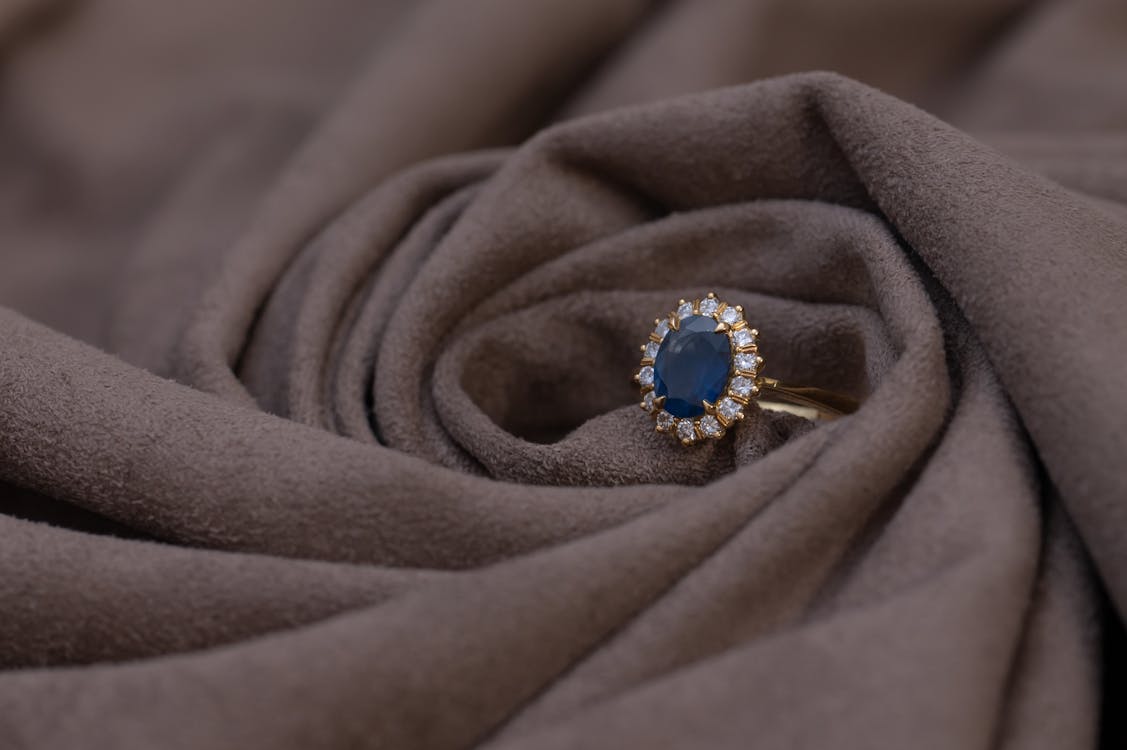
The general consensus is that sapphires were first discovered in ancient times, dating far back to civilizations in Sri Lanka, India and throughout the Middle East. They made their way to Egypt, Rome and Greece by sea trade. Sapphires were highly prized for their amazing blue color and shining brilliance.
Ancient cultures were awash with symbolism and this included precious stones. In the Indian sub-continent, sapphires were associated with divine favor and fruitful blessings, along with virtue and truth. In Greek and Roman cultures, sapphires were linked to wisdom and purity.
During the height of the Roman Empire, sapphires were highly treasured and used in lots of high-status jewelry pieces, particularly rings.
The Middle Ages
Moving into the Middle Ages, sapphires began to gain even more personal significance, becoming a favored gemstone for nobility and royal families across the globe. Sapphires started to become one of the most used gemstones in the creation of items like crowns, scepters and other regal accessories.
Historical Sapphires
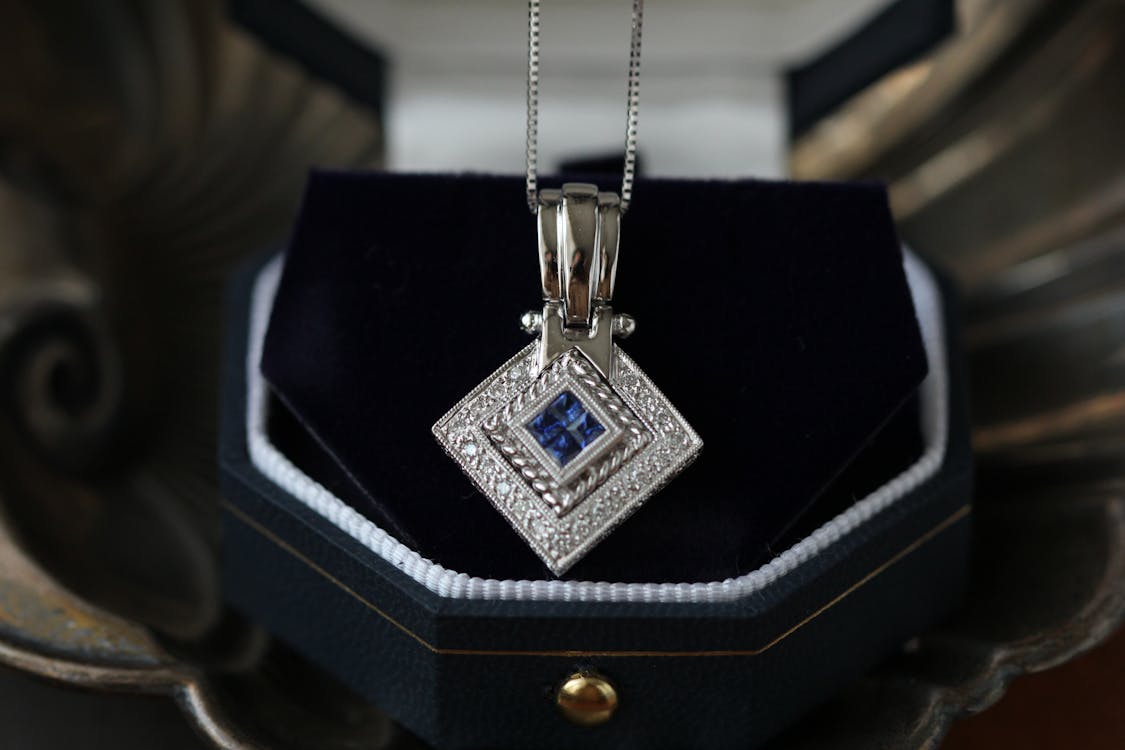
A good example is the Stuart Sapphire that is in the Imperial State Crown of the UK which is known to date back to at least 1649. Even older and also occupying a space on the magnificent crown is the St. Edward Sapphire believed to have originally been in the coronation ring of Edward the Confessor in 1042. These are two of the most legendary and historical sapphires in the world.
Another is the Star Of India. Throughout the 1800s, huge areas of sapphire deposits were continually discovered in places like Burma and Sri Lanka, and this led to an increase in the availability and popularity of the gemstone in the worldwide market.
One of the most significant moments in the history of the sapphire was the discovery of the Star of India in Sri Lanka in the 19th century. This is an unbelievable 563-carat blue Ceylon sapphire that exhibits the star-like optical effect called asterism. This iconic sapphire became one of the most alluring and popular gemstone discoveries in history. Today, it resides in the American Museum of Natural History (like the other of the famous star Sapphires, the Midnight Star.)
The Spiritual And Healing Properties of Sapphire
Throughout all of history since its initial discovery, the sapphire has always been believed to boast somewhat mystical and healing properties. In certain cultures, the stones were considered to be protective talismans against the perceived evil and harmful forces of the world. Owning and wearing them was believed to provide inner peace and feelings of enlightenment in darker times.
In modern times, sapphires are a popular inclusion in pieces of jewelry representing the hamsa symbol which wards off evil spirits and has been known in Middle Eastern cultures since 1500 BC.
Sapphires have also held their place in ancient medicine. Eastern medicine practices used sapphire to treat varicose veins, eye irritations and ingrown toenails.
Modern Meanings And Symbolism
Into the 20th century, sapphires began to gain particular popularity in the arena of engagement rings, being seen as a suitable alternative to traditional diamonds. The reason for this is that the stones came to be associated with the profound symbolism of romantic notions like loyalty, sincerity and eternal love.
In more modern times, blue sapphires, in particular those boasting a deep, rich blue color continue to be the most sought-after and valuable kinds of sapphires on the jewelry market.
Today, we give personal significance to sapphires in the same way as other gemstones and semi-precious stones. Sapphire is the birthstone for September and also represents a 45th anniversary.
The continued symbolism that seems to persist across the ages is that of wisdom and insight. Sapphires have always evoked meanings of truth, wisdom and insight which makes them cherished among those who seek inner guidance and spiritual support.
Away from the sheer beauty of the gemstone itself, the sapphire's reputation for extreme hardness and durability has made it a suitable option for various uses in the industrial field. Sapphires are regularly used for things like scientific instruments, high tech component parts and also smartphone camera lenses.
Continued Allure
It is no surprise that sapphires continue to be highly revered, cherished and sought after all over the world. They have managed to maintain their special allure and symbolism across cultures and across generations, which is something that not all gems and semi-precious stones that have had their own periods of popularity over time can claim.
If you are on the lookout for a new captivating gemstone to add to your own jewelry collection and jewelry box, you'll find a wide range of jewelry styles that feature sapphires at Moyen & Co. For sapphire engagement rings and other high-quality sapphire items, our multitude of options ensure that there is something for everyone, covering every kind of personal style. Come for the promise of remarkable gemstones, stay for the mesmerizing color, exceptional durability, deep symbolism and all-important touch of elegance!
